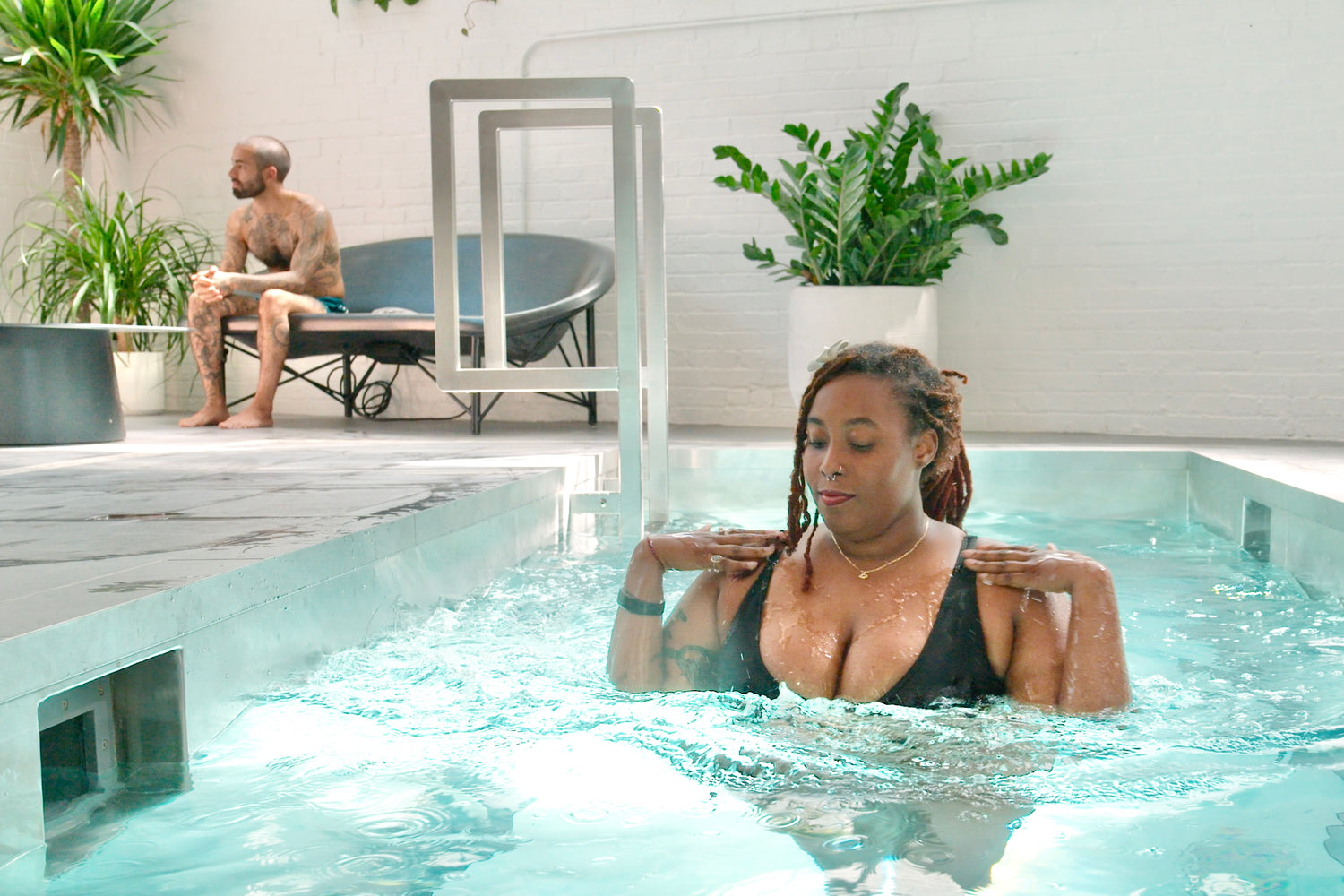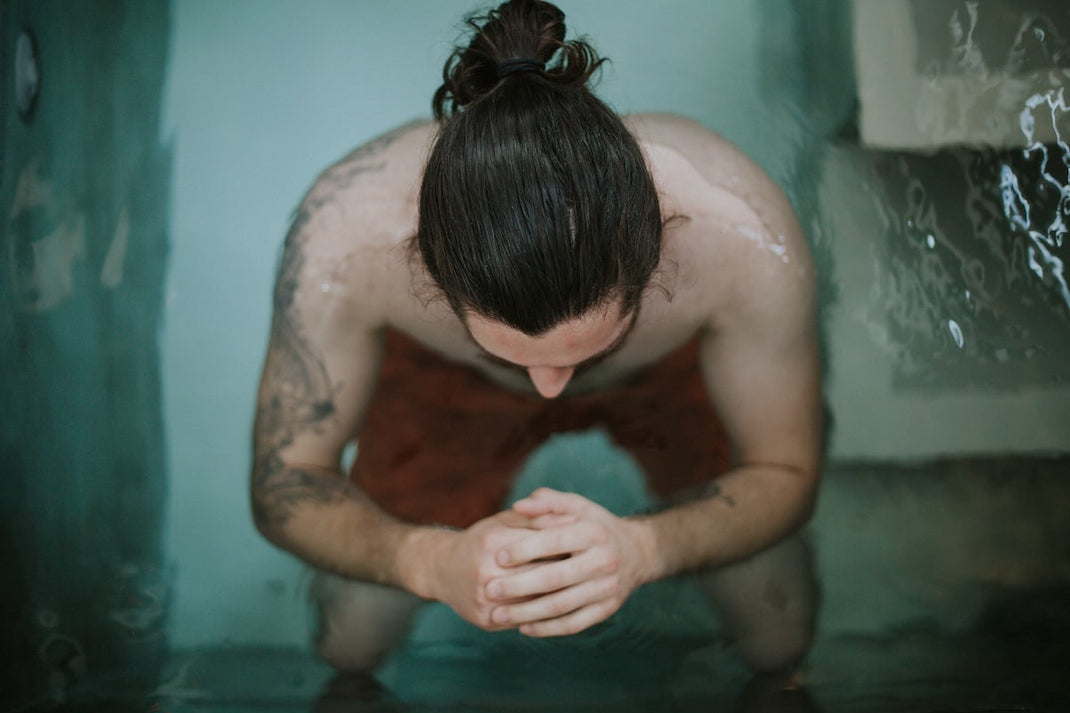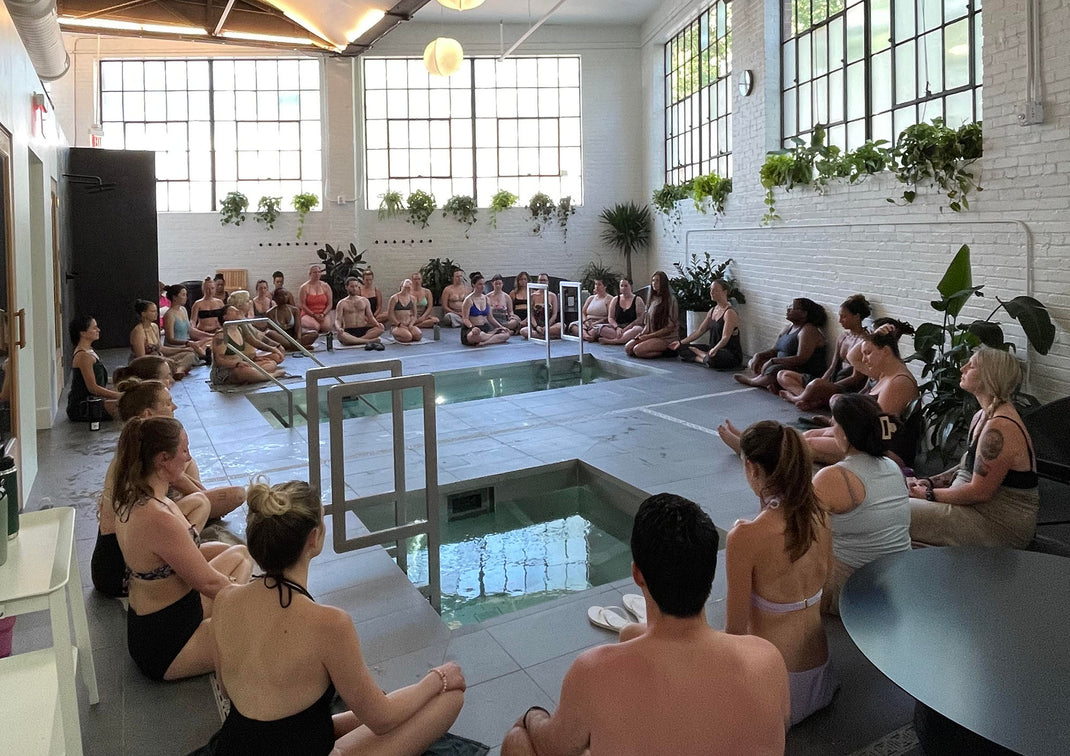The Latest Research on Cold Plunging, Women’s Health, and When to Plunge
4 Min Read / Marielle BachmanAs the weather warms and routines adapt to the summer shift, more people are embracing cold plunging—not just for the thrill of the chill, but for the wide-ranging health benefits. Recent studies reveal how cold exposure affects the body, especially for women, and how to time it around one’s biological rhythm to get the most from your plunge.
Whether you're plunging for recovery, energy, hormone balance, or mental clarity, here's what the science says in 2025.


Cold Exposure and Cellular Resilience
Cold plunging activates a range of physiological responses designed to protect the body and enhance performance. A 2024 study published in Advanced Biology demonstrated that brief cold water immersion initiates cellular changes that support metabolic health and immune function. The researchers found that the stress induced by cold triggers the release of cold-shock proteins, which increase cellular resilience and may even have anti-aging effects [1].
This process, sometimes referred to as “cold-induced thermogenesis,” helps increase mitochondrial biogenesis—the process by which new, energy-producing mitochondria are formed in cells. That’s good news for your energy levels and metabolic rate, especially in warm-weather months when thermoregulation is less of a priority for the body.
The Søberg Principle: Cold, Calm, and Hormones
Dr. Susanna Søberg, a leading researcher in the field of contrast therapy, has outlined what she calls the “Søberg Principle”: to maximize the metabolic effects of cold plunging, it’s best to let the body rewarm naturally after exposure, without jumping into a hot shower [2].
Cold exposure also triggers a strong release of norepinephrine and dopamine, helping with focus, mood, and mental clarity. These effects appear to be particularly helpful for women experiencing hormonal fluctuations, perimenopause, or burnout. According to Søberg and others, cold therapy can help regulate the HPA axis (hypothalamic-pituitary-adrenal axis), which governs stress response [3]
Cold Plunging and Women’s Health
While most cold exposure studies historically centered on male physiology, newer data are illuminating unique benefits for women:
- Hormonal Balance: Cold plunging may help stabilize cortisol levels, a crucial benefit for women facing chronic stress or adrenal dysregulation [4].
- Reduced Inflammation: A 2022 review found cold water immersion to reduce markers of systemic inflammation, a symptom closely linked to autoimmune conditions that disproportionately affect women [5].
- Improved Menstrual and Perimenopausal Symptoms: Both anecdotally and clinically, some women report reduced cramping, better mood regulation, and improved sleep when using cold plunging as part of their cycle-based self-care [6].
Additionally, Dr. Jolene Brighten, a board-certified hormone expert, notes that cold exposure can help with blood sugar regulation and may support thyroid function, though caution should be taken by women with hypothyroidism [7].
Every phase of the menstrual cycle brings its own rhythm—and cold exposure can be a helpful tool for tuning into those natural shifts. During menstruation, your body may feel more sensitive to extremes, and cold plunges might feel less appealing. While a short dip (under a minute) can help ease cramps, bloating, and inflammation, it’s perfectly okay to skip it and lean into the warmth of the sauna instead. The key during this phase is to listen closely and honor what feels nourishing.
As the female cycle progresses into the follicular and ovulation phases, rising estrogen and energy levels can make cold plunging feel more invigorating and supportive. During this time, 1–3 minutes in the plunge can help boost circulation, sharpen focus, and elevate mood—especially around ovulation when your vitality tends to peak. In the later luteal phase, as PMS symptoms can surface, shorter plunges (30–90 seconds) may still be helpful for managing inflammation and stabilizing energy. Just remember: your experience is uniquely yours. Let your body be the guide, and use cold intentionally—never as a test of will, but as a tool for balance [7].



Cold Plunging: Working it into your Workout Routine
The timing of your plunge matters—especially if you're training for performance or hypertrophy (muscle growth). While images of athletes submerged in training room ice baths are easy to conjure, they may not be indulging fresh off a training session. According to a comprehensive review published in Frontiers in Sports and Active Living, cold plunging immediately after strength training may blunt muscle gains, as the inflammation from training is necessary to build strength [8].
Best practices based on current science:
- Before a workout: Cold plunging can increase alertness, reduce perceived effort, and provide a burst of dopamine—a chemical hit particularly helpful for cardio or endurance training.
- After a workout: Wait at least 4–6 hours if you’re focusing on building muscle. However, for endurance athletes or those prioritizing recovery over growth, post-workout cold immersion can reduce soreness and inflammation effectively [9].
In short: If you’re lifting heavy and want muscle gains, delay your plunge. If you’re just trying to feel good, reset, or recover faster—go for it after your session.
Igniting Brown Fat: Your Body’s Built-in Furnace
Another fascinating benefit of cold exposure, especially relevant during warm months when we’re less naturally inclined to activate it, is the stimulation of brown adipose tissue, or brown fat. Unlike white fat, which stores energy, brown fat burns calories to generate heat and help regulate body temperature.
A 2023 study published in Nature Metabolism found that regular cold exposure—even just a few minutes several times per week—can increase the activity and volume of brown fat, leading to improved insulin sensitivity, better blood sugar regulation, and greater overall metabolic health [10].
Women, in particular, appear to have more brown fat than men, and it becomes more active in cooler conditions. That means consistent cold plunging may offer a natural way to boost resting energy expenditure and thermoregulation, especially when paired with other healthy lifestyle habits.
So, whether you’re seeking better energy balance, blood sugar control, or just a more efficient metabolism, brown fat activation might be one more reason to keep plunging—even when the sun’s out.
Why Summer Is a Great Time to Start
In summer, your core body temperature runs higher, and cold exposure can offer a reprieve from heat-induced fatigue. But even more importantly, staying consistent with your cold practice when the weather is warm builds resilience. Just as strength training conditions your muscles, cold therapy trains your nervous system to stay calm under stress—a benefit that pays dividends across physical, mental, and emotional health.
Final Takeaways
- Cold plunging increases cellular resilience, boosts mood, and can support hormonal and metabolic health.
- Women may especially benefit from cold exposure when managing stress, inflammation, or hormone changes.
- For performance: plunge before cardio or hours after lifting to avoid impairing muscle gains.
- Let your body rewarm naturally to reap the full metabolic benefits.
Whether you're stepping into your first cold plunge or are a seasoned bather, the science says: stay cool, stay consistent, and reap the rewards. Come check out our cold plunges in Asheville, Durham, Charlotte, Bonita Springs and Greenville.

This blog post was researched, edited and written by Marielle Bachman.
Marielle is a designer and communicator who’s spent her career helping mission-driven brands tell their stories through thoughtful design and strategy. Beyond the screen, she’s a certified yoga instructor and practicing herbalist, passionate about holistic living and the deep connection between nature and healing.
Her love for wellness shows up in all areas of life—from cooking nourishing meals and spending time outdoors, to practicing daily rituals that ground the body and calm the mind. One of her favorite practices? Contrast therapy sessions at Sauna House.
Discover the benefits of cold plunging
Book NowSources Cited
1. Maag, J. L. V., et al. (2024). Cold Exposure Promotes Metabolic Adaptation via Cold Shock Proteins. Advanced Biology. https://doi.org/10.1002/adbi.202400111
2. Søberg, S. (2024). ZOE Science & Nutrition Podcast. https://zoe.com/learn/cold-exposure-dr-susanna-soberg
3. Healthline. (2024). Do the Health Claims of Cold Water Immersion Hold Up? https://www.healthline.com/health-news/health-claims-cold-water-immersion
4.Dr. Jolene Brighten. (2024). Benefits of Cold Plunge. https://drbrighten.com/cold-plunge-benefits/
5. Szymura, J., et al. (2022). Cold Exposure and Inflammation. PubMed. https://pubmed.ncbi.nlm.nih.gov/36505067/
6. Women’s Health Magazine. (2024). Cold Plunge Cellular Benefits Study. https://www.womenshealthmag.com/health/a64355781/cold-plunge-cell-change-study/
7. Dr. Jolene Brighten. (2024). Cold Plunge and Hormones. https://drbrighten.com/cold-plunge-benefits/
8. Roberts, L. A., et al. (2022). Cold Water Immersion and Muscle Growth. https://pubmed.ncbi.nlm.nih.gov/1890772/
9. Morozko Forge. (2024). Do Ice Baths Increase Testosterone? https://www.morozkoforge.com/post/do-ice-baths-increase-testosterone
10. Hanssen, M. J. W., et al. (2023). Short-term cold acclimation improves insulin sensitivity in patients with type 2 diabetes mellitus. https://doi.org/10.1038/s42255-023-00726-z
1. Maag, J. L. V., et al. (2024). Cold Exposure Promotes Metabolic Adaptation via Cold Shock Proteins. Advanced Biology. https://doi.org/10.1002/adbi.202400111
2. Søberg, S. (2024). ZOE Science & Nutrition Podcast. https://zoe.com/learn/cold-exposure-dr-susanna-soberg
3. Healthline. (2024). Do the Health Claims of Cold Water Immersion Hold Up? https://www.healthline.com/health-news/health-claims-cold-water-immersion
4.Dr. Jolene Brighten. (2024). Benefits of Cold Plunge. https://drbrighten.com/cold-plunge-benefits/
5. Szymura, J., et al. (2022). Cold Exposure and Inflammation. PubMed. https://pubmed.ncbi.nlm.nih.gov/36505067/
6... See all sources
1. Maag, J. L. V., et al. (2024). Cold Exposure Promotes Metabolic Adaptation via Cold Shock Proteins. Advanced Biology. https://doi.org/10.1002/adbi.202400111
2. Søberg, S. (2024). ZOE Science & Nutrition Podcast. https://zoe.com/learn/cold-exposure-dr-susanna-soberg
3. Healthline. (2024). Do the Health Claims of Cold Water Immersion Hold Up? https://www.healthline.com/health-news/health-claims-cold-water-immersion
4.Dr. Jolene Brighten. (2024). Benefits of Cold Plunge. https://drbrighten.com/cold-plunge-benefits/
5. Szymura, J., et al. (2022). Cold Exposure and Inflammation. PubMed. https://pubmed.ncbi.nlm.nih.gov/36505067/
6. Women’s Health Magazine. (2024). Cold Plunge Cellular Benefits Study. https://www.womenshealthmag.com/health/a64355781/cold-plunge-cell-change-study/
7. Dr. Jolene Brighten. (2024). Cold Plunge and Hormones. https://drbrighten.com/cold-plunge-benefits/
8. Roberts, L. A., et al. (2022). Cold Water Immersion and Muscle Growth. https://pubmed.ncbi.nlm.nih.gov/1890772/
9. Morozko Forge. (2024). Do Ice Baths Increase Testosterone? https://www.morozkoforge.com/post/do-ice-baths-increase-testosterone
10. Hanssen, M. J. W., et al. (2023). Short-term cold acclimation improves insulin sensitivity in patients with type 2 diabetes mellitus. https://doi.org/10.1038/s42255-023-00726-z



